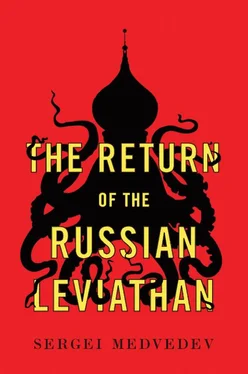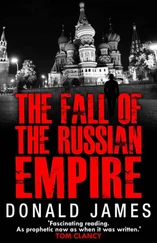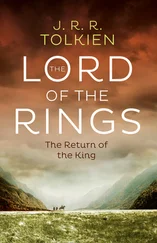What unites all these phenomena is that in Nigeria, Syria and Iraq, as well as in Donetsk and Lugansk, similar zones have emerged where there is uncontrolled violence. They are examples of what the British sociologist, Mary Kaldor, has called ‘new wars’. These are new types of organized violence, in which the boundaries are wiped away between the traditional type of war, in which states and armies take part, and organized crime, terrorism and the systematic violation of human rights. ‘New wars’ are like whirlpools that suck in people, territory and resources. Their existence is fuelled both by external military and humanitarian aid, as well as by their own ‘economy of violence’, based on robbery and murder as well as trade in arms, humanitarian aid and people. For the local ‘entrepreneurs of violence’ (field commanders and political leaders), violence is a profitable business that demands constant new investment. Many economists who examine modern wars see them not as ‘ethnic conflicts’, ‘struggles for national liberation’ or ‘decolonization’, but simply as a type of organized crime.
The ‘hybrid war’ in Eastern Ukraine, of which Russian military theoreticians are so proud, has become another of the ‘new wars’ as defined by Kaldor. Donetsk and Lugansk today remind one of Chechnya between 1996 and 1999: a bandit state, a ‘black hole’ of violence, contraband and terrorism, which almost pulled in the whole of the North Caucasus. It is no coincidence that among the ranks of the militia bands in the Donbass there are Chechen battalions. These are not simply warriors sent by the Chechen President, Ramzan Kadyrov; they are also fighters for the purity of the faith against the hated West. The paradox of this situation is that Vladimir Putin, who came to power and gained popularity at the peak of the struggle against terrorism, blood and money that fuelled the hotbed of terrorism in Chechnya, has now created with his own hands a second Chechnya even closer to the centre of Russia, right on the border with the Rostov Oblast. All sorts of mercenaries are undergoing a military baptism, and the mad ‘re-enactors’ of historic battles are living out their bloody fantasies. Here we have yet another similarity with ISIS, which attracts fanatics and scumbags from all over the world. Some 15,000 foreigners are fighting in their ranks, including up to 2,000 citizens from Western Europe, such as ‘Jihadi John’, who beheaded journalists and became one of the ‘heroes’ on Foreign Policy ’s list.
A social and humanitarian catastrophe is unfolding in the Donbass, and violence is becoming a way of life. This violence cannot be contained within the region’s borders. More and more frequently, it is bursting out into the outside world, as happened with the destruction of flight MH17. The global community has already shown that Russia was responsible, having provided the separatist fighters with modern weaponry. This violence is already being felt in Russia itself, as shown by an incident that happened on 3 November 2014, when four drunken militia fighters from the DPR who were taking a break in the Moscow region and celebrating election day in Donetsk, shot up a traffic police patrol in the Solnechnogorsky District. Three of them got away. Apparently, they were all from the ‘Ghost’ ( Prizrak ) brigade led by the Lugansk commander, Alexei Mozgovoi. Mozgovoi himself is given huge support in Russia, where he holds meetings with leaders of the parliamentary parties – the Liberal Democratic Party of Russia and A Just Russia – and travels around Moscow in a four-by-four with number plates decorated with the Novorossiya symbol. As he himself acknowledges, if traffic police inspectors stop him and recognize him, they wave him on his way, wishing him well.
According to rumours, the brains behind these pirate republics meet not in the frozen wastes of Donetsk or Lugansk, but in Moscow, in a separate room in the ‘Kofemaniya’ café on Bolshoi Cherkassky Lane, [26] ‘Kofemaniya’ is a popular chain of coffee shops in Russia.
exactly halfway between the FSB building on Lubyanka Square and the Presidential Administration headquarters on Staraya Square. Alexander Borodai, ministers from the DPR and senior representatives of the Presidential Administration have been spotted there. It seems that these ‘global thinkers’ of the twenty-first century, the postmodernists, can slip away from their cosy Moscow offices to bless the jihad with military Orthodoxy and modern weaponry. They have not yet managed to build their ‘Russian world’; but they have succeeded in tearing Russia away from developments going on around the world, just as their like-minded thinkers who cannot cope with globalization have done in Nigeria, Colombia, Iraq and elsewhere.
The Russian media came up with another reason to laugh at Europe. In October 2013 in Paris there were mass demonstrations and strikes at the lycées in protest at the extradition from France of two migrant schoolchildren, a fifteen-year-old gypsy girl from Kosovo and a nineteen-year-old Armenian lad. The students demanded the resignation of the Minister of the Interior, Manuel Valls. Once again, Russian propaganda talked about ‘the extremes of tolerance’ and ‘the dominance of migrants’. It would simply be impossible to imagine such a scenario in Russia.
Two vital factors are missing from any Russian discussion about migrants. The first is the human dimension (hardly surprising in a country where social Darwinism has triumphed). The migrant problem is examined from a variety of viewpoints: economics, corruption, the labour market, national security, street crime, society’s adaptability, Russia’s cultural immunity. It is looked at using biological terms such as ‘fresh blood’ and mechanical terms such as the ‘assimilative machine’, as the conservative economist and politician Maxim Sokolov describes it. But hardly anyone talks about the most basic fact: this is first and foremost about people who have lived side by side with us for years, decades even; people with their own joys, heartaches and rights. And not just the legal rights of entry, residence and work, but the standard human rights to life; freedom from slavery, hunger and oppression; the right to shelter and to justice.
This is very difficult to explain to Russians, who have become so hardened and neglected over the past twenty-five years that they are constantly creating their own outcasts: the elderly, the homeless, drug addicts, AIDS sufferers. You could even add to that list stray dogs, which in Russia are looked on as biological rubbish, not as living creatures with their own inalienable rights. Migrants (or ‘animals’ to use the slang of Russian neofascists) are effectively on a par with those stray dogs. Society can regulate their usefulness and their population at its own discretion. Some can be trapped and sterilized; others can be poisoned; a third group can be sent to shelters. Gastarbeiter (guest workers) are looked upon merely as biomass. All that needs to be agreed is how many there are, the correct way in which they can be used, and the regulation of their social and cultural hygiene.
Not surprisingly, over the last few years Russian society has adopted the most primitive form of racism. One can recall the pathetic posters of the nationalist ‘Russian March’ (which now takes place in the depressed Moscow suburb of Biryulyovo), with their slogan, ‘For the sake of the white children’s future’; against a background of a field of wheat there’s a dyed blonde woman holding a fair-haired child. Or the ultraliberal journalist Yulia Latynina, who writes in the opposition newspaper Novaya Gazeta about the ‘slave subculture’, with its ‘traditional culture of despotism, oppression and Islam’. There’s even the respected opposition figure, Vladimir Ashurkov, a graduate of the prestigious Moscow Institute of Physics and Technology and the Wharton Business School at the University of Pennsylvania, who presented the classic civilizing argument in the business newspaper, Vedomosti :
Читать дальше












